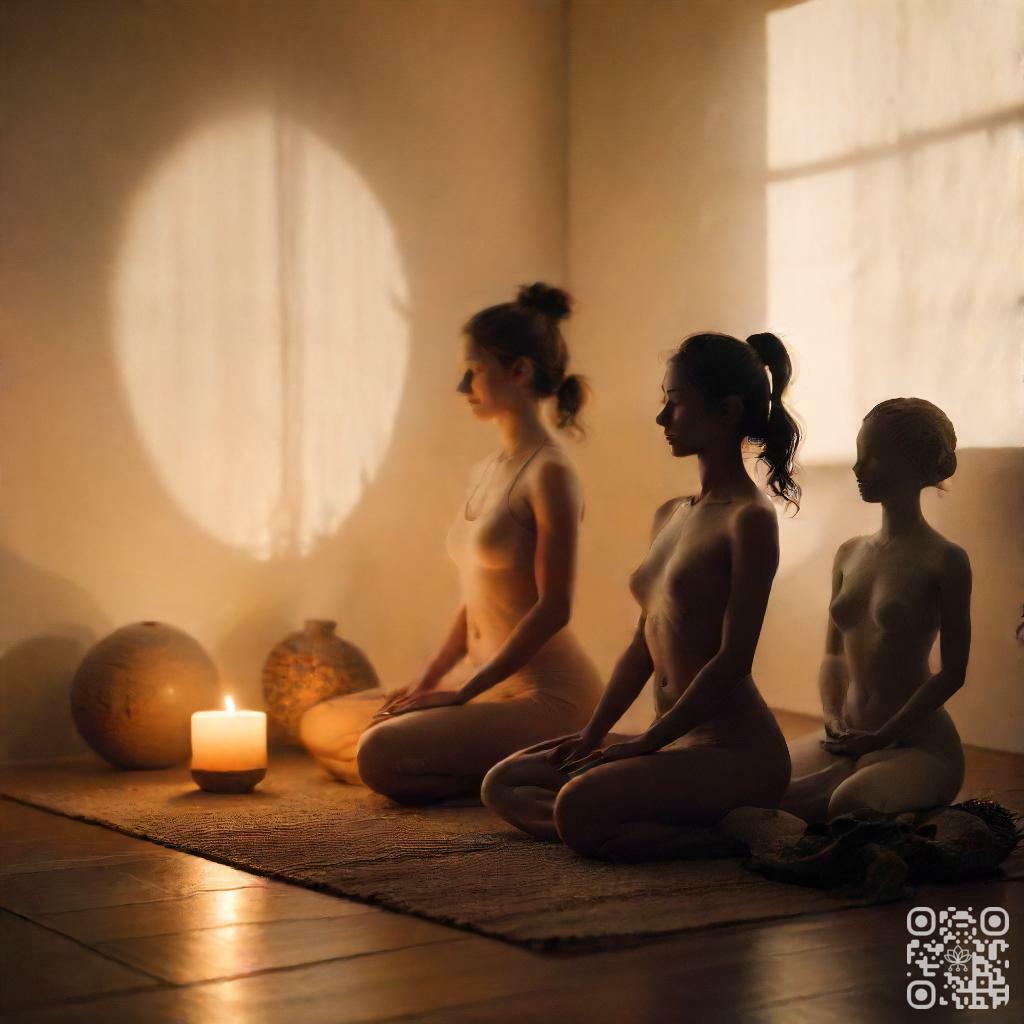Experience the transformative practice of Yin Yoga for a profound sense of release and relaxation. In this article, we ponder the ancient practice of Yin Yoga and its powerful benefits for both the body and mind.
From its gentle yet deep stretches to its focus on holding poses for extended periods, Yin Yoga offers a unique opportunity to evoke tension and find inner peace. Perceive how this meditative practice can enrich your overall well-being and provide a much-needed escape from the stresses of daily life.
Join us on this journey of self-discovery and embrace the healing power of Yin Yoga.
Yin Yoga Poses for Deep Release
In this section, we will investigate five yin yoga poses that are perfect for deep release and relaxation. These poses target the connective tissues in the body, helping to increase flexibility and promote a sense of calm and tranquility.
1. Butterfly pose (Baddha Konasana)
Butterfly pose is a gentle hip opener that stretches the inner thighs and groin. To perform this pose, sit on the floor with the soles of your feet touching and your knees bent out to the sides. Gently fold forward, keeping your spine straight, and breathe deeply into the stretch.
2. Sphinx pose (Salamba Bhujangasana)
Sphinx pose is a restorative backbend that helps to open the chest and lengthen the spine. To practice this pose, lie on your stomach with your elbows under your shoulders and your forearms flat on the ground. Press down through your forearms and lift your chest, keeping your hips on the ground.
3. Dragon pose (Ardha Hanumanasana)
Dragon pose is a deep hip opener that stretches the hip flexors and hamstrings. Start in a low lunge position with your right foot forward. Slowly slide your right foot forward until you feel a stretch in the left hip flexor. Keep your hands on the ground for support or place them on blocks for a deeper stretch.
4. Child’s pose (Balasana)
Child’s pose is a calming pose that promotes relaxation and surrender. Begin by kneeling on the floor with your big toes touching and your knees hip-width apart. Slowly lower your hips back towards your heels and extend your arms forward, resting your forehead on the ground. Breathe deeply and allow your body to relax.
5. Supported fish pose (Matsyasana)
Supported fish pose is a heart-opening posture that stretches the chest and shoulders. To practice this pose, place a block or bolster under your upper back and lie down on it. Allow your head to gently drop back and relax, feeling a gentle opening in the front of your body.
| Yin Yoga Pose | Benefits |
|---|---|
| Butterfly pose (Baddha Konasana) | Stretches inner thighs and groin |
| Sphinx pose (Salamba Bhujangasana) | Opens the chest and lengthens the spine |
| Dragon pose (Ardha Hanumanasana) | Deep hip opener, stretches hip flexors and hamstrings |
| Child’s pose (Balasana) | Promotes relaxation and surrender |
| Supported fish pose (Matsyasana) | Heart-opening posture, stretches chest and shoulders |

Importance of Breath and Mindfulness in Yin Yoga
In Yin Yoga, the breath plays a crucial role in connecting the mind and body. It serves as a powerful tool to deepen your practice and find inner peace. By focusing on your breath, you can cultivate mindfulness and intensify the benefits of this gentle yet profound form of yoga.
1. Connecting with your breath
One of the fundamental aspects of Yin Yoga is to connect with your breath. As you settle into each pose, pay attention to the natural rhythm of your breath. Take slow, deep inhales and exhales, allowing your breath to guide you deeper into the pose. This connection with your breath allows you to bring awareness to your body and be fully present in the moment.
2. Cultivating mindfulness during a Yin Yoga practice
Mindfulness is the state of being fully aware and present in the current moment. Yin Yoga provides the perfect opportunity to cultivate mindfulness. As you hold each pose for an extended period, you have the chance to observe your thoughts, sensations, and emotions without judgment. By staying present and focusing on your breath, you can deepen your mindfulness practice and experience a sense of inner calm and clarity.
3. How breath and mindfulness augment deep release
The combination of breath and mindfulness in Yin Yoga allows for a deep release in both the physical and mental aspects of your being. As you breathe deeply and mindfully, you create space within your body and mind, allowing tension and stress to melt away. This deep release can help improve flexibility, increase energy flow, and promote overall well-being.
To further elevate your embracing of the importance of breath and mindfulness in Yin Yoga, consider the following table:
| Benefits of Breath and Mindfulness in Yin Yoga | |
|---|---|
| 1. Enhanced relaxation | By focusing on your breath and cultivating mindfulness, you can experience a deeper state of relaxation during your Yin Yoga practice. |
| 2. Improved mental clarity | Connecting with your breath and practicing mindfulness can help quiet the mind, reduce mental chatter, and empower clarity of thought. |
| 3. Increased body awareness | Through breath and mindfulness, you become more attuned to the sensations and needs of your body, allowing for a deeper discerning of your physical self. |
Props and Modifications for Yin Yoga
Yin Yoga is a gentle and meditative practice that focuses on deep stretching and relaxation. To augment your Yin Yoga practice, props can be used to provide support and modifications can be made to accommodate different levels of flexibility. Here are some key points to consider:
1. Using props to support your practice
Props such as blocks, bolsters, and blankets can be utilized to support your body in various Yin Yoga poses. For example, placing a bolster under your knees in a seated forward fold can help to release tension in the lower back and hips. These props provide stability and allow you to stay in poses for longer periods, enabling a deeper stretch and a more restorative experience.
2. Modifying poses for different levels of flexibility
Yin Yoga poses can be modified to suit different levels of flexibility. If you are a beginner or have limited flexibility, you can use props to make poses more accessible. For instance, if you find it challenging to reach the ground in a forward fold, you can use blocks to bring the ground closer to you. This modification allows you to experience the benefits of the pose meanwhile respecting your body’s limitations.
3. Recommended props for a Yin Yoga practice
There are several props that are commonly used in Yin Yoga. These include:
- Blocks: Blocks can be used to bring the ground closer to you, providing support and stability in various poses.
- Bolsters: Bolsters are long, firm pillows that can be placed under different parts of the body to provide support and promote relaxation.
- Blankets: Blankets can be folded and used to cushion and support the body in seated or lying poses.
Using these props can enrich your Yin Yoga practice and help you experience the full benefits of the poses.

Yin Yoga and its Impact on the Body
Yin Yoga is a unique form of yoga that focuses on long-held poses and stretching the connective tissues. It has numerous benefits for the body, including increased flexibility, joint mobility, and balance in the body’s energy channels.
1. Stimulating the Connective Tissues
Yin Yoga targets the deep connective tissues, such as ligaments, tendons, and fascia. By holding poses for an extended period, usually around 3 to 5 minutes, it helps stimulate and strengthen these tissues. This can improve overall joint health and reduce the risk of injuries.
2. Increasing Flexibility and Joint Mobility
The prolonged stretching in Yin Yoga helps to increase flexibility and joint mobility. By holding poses for a longer duration, the muscles and connective tissues are gently stretched, allowing them to release tension and become more pliable. This can lead to improved range of motion and enhanced athletic performance.
3. Balancing the Body’s Energy Channels
In traditional Chinese medicine, it is believed that energy flows through specific channels in the body called meridians. Yin Yoga helps to balance and unblock these energy channels, promoting the smooth flow of energy throughout the body. This can help restore harmony and promote overall well-being.
| Benefits of Yin Yoga | |
|---|---|
| Improved flexibility and joint mobility | Allows for increased range of motion and reduced stiffness. |
| Enhanced relaxation and stress relief | Helps calm the mind and release tension in the body. |
| Supports healthy aging | Helps maintain joint health and prevent age-related stiffness. |
| Increased body awareness | Allows for deeper connection with the body and its sensations. |

Yin Yoga and Stress Relief
1. How Yin Yoga promotes relaxation
Yin Yoga is a slow-paced style of yoga that focuses on holding poses for an extended period of time, typically ranging from one to five minutes. This gentle and meditative practice allows the body to relax deeply, releasing tension and stress. By engaging in long, passive stretches, Yin Yoga stimulates the parasympathetic nervous system, which promotes a state of relaxation and rest.
2. Releasing tension and reducing anxiety
One of the major benefits of Yin Yoga is its ability to release tension stored in the body. Through the prolonged holding of poses, deep layers of connective tissue and fascia are targeted, helping to release physical tension and tightness. Additionally, Yin Yoga encourages practitioners to focus on their breath and cultivate mindfulness, which can help reduce anxiety and promote a sense of calm.
3. Cultivating a sense of calm and inner peace
Yin Yoga’s emphasis on stillness and introspection allows practitioners to cultivate a sense of calm and inner peace. By surrendering to the present moment and letting go of external distractions, individuals can tap into a deeper state of relaxation and tranquility. This practice is particularly beneficial for those who lead busy and stressful lives, as it offers a sanctuary for rejuvenation and self-care.
| Benefits of Yin Yoga for Stress Relief |
|---|
| 1. Enhanced relaxation: Yin Yoga promotes deep relaxation and helps counteract the effects of chronic stress. |
| 2. Improved flexibility: The prolonged stretches in Yin Yoga increase flexibility and range of motion. |
| 3. Emotional balance: Practicing Yin Yoga can help regulate emotions and promote emotional well-being. |
| 4. Stress reduction: By releasing tension and calming the mind, Yin Yoga effectively reduces stress levels. |
Read More:
1. Seated Serenity: Chakra-Balancing Yoga Poses
2. Nidra Bliss: Yoga Nidra for Deep Chakra Harmony